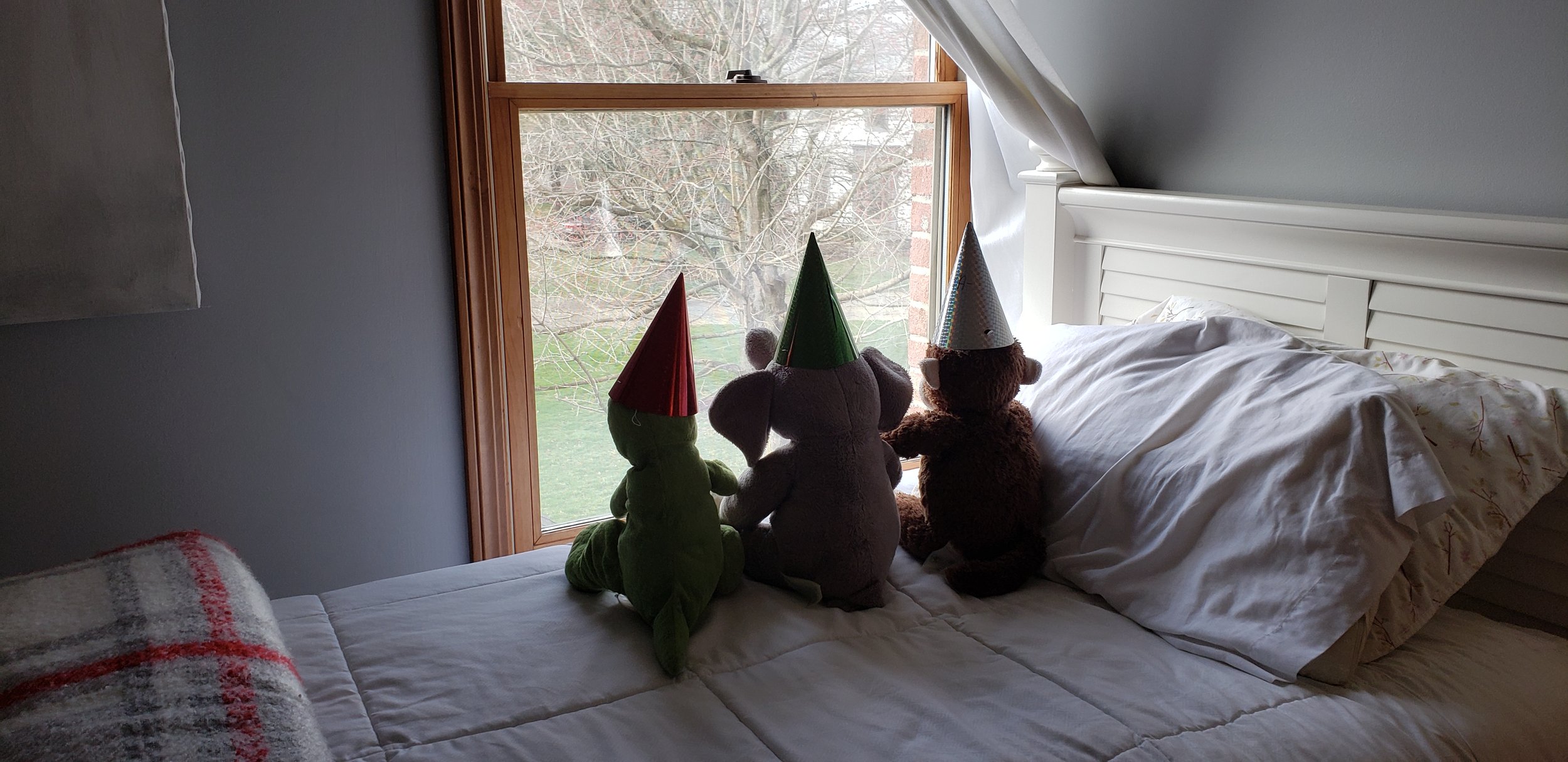Three “old friends” who anxiously await her return. Not pictured: Dad with a party hat.
The deadline for an 18-year project arrived today.
At times, the work felt impossible. It felt like it might never end. I sensed on too many occasions I was wildly out of my league and unskilled to do this work. And often I believed that I alone might be fully responsible for ruining the project – did I overwork it? Underwork it? Neglect critical parts?
But as the deadline neared, all I craved was more time. Time to pour just a little more into it. Time in hopes that the impact would be undeniable.
Sound familiar?
Deadlines exist for a reason. At some point we have no choice but to ship our work.
But this isn’t any ordinary project.
And this so-called project isn’t a project at all.
This is about my only daughter, and all the love and nurturing and parenting and choosing your battles wisely in hopes of getting her right here, at the edge of the nest, and wondering if a nudge will be necessary or if she will spread her wings to fly on her own and bring this chapter to a close.
I tell you, the college drop-off itself isn’t hard. It’s rather beautiful in its awkward messiness and exciting preparation for new life experiences.
But leaving campus without that little girl in the backseat? That’s the part that guts you.
This is our life’s work: the relational, the pouring into, the molding, the listening, guiding, coaching, and even getting out of the way – in hopes the job isn’t over, not for a long shot.
And we’re all on deadline whether we choose to accept it or not.
Yes, deadlines (often) matter. Yes, it’s our job to meet them. So we must give our full effort, ship our work, and hope for the best — and that rings true of our kids, whether going to 1st grade or off to college.
Sometimes we get a front-row seat to success we didn’t expect. A lot of the time we just become perpetual learners ourselves.
We could all do better about prioritizing our relational work. We don’t always have the knowledge of, or get clear reminders about the relational deadlines.
Thankfully, I have another 18-year project that I still get to work on. Which is why I need to remind myself: Keep leaning in and showing up. After all, this is your life’s most meaningful work... and the deadline is coming.






